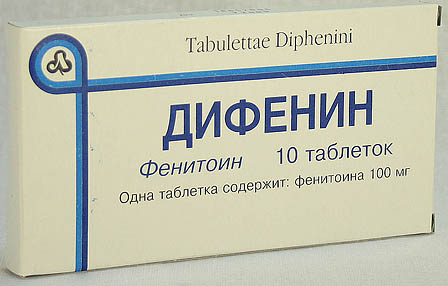Anticonvulsants are medicines used to treat seizures as the main manifestation of epilepsy. The term “antiepileptic” drugs is considered more correct, since they are used to combat epileptic seizures, which are far from always accompanied by the development of seizures.
Anticonvulsants, today, are represented by a fairly large group of drugs, but the search and development of new drugs continues. This is due to the variety of clinical manifestations. After all, there are many varieties of seizures with different mechanisms of development. The search for innovative means is also determined by the resistance (resistance) of epileptic seizures to some existing drugs, the presence of side effects that complicate the patient's life, and some other aspects. From this article you will learn for yourself information about the main antiepileptic drugs and the features of their use.
Some basics of epilepsy pharmacotherapy

A feature of the use of drugs is their good tolerability. The most common side effects include:
- dizziness and drowsiness;
- dry mouth, impaired appetite and stool;
- blurred vision;
- erectile disfunction.
Gabapentin is not used in children under 12 years of age, Pregabalin is prohibited under 17 years of age. Drugs are not recommended for pregnant women.
Phenytoin and Phenobarbital
These are "veterans" among therapeutic drugs for epilepsy. To date, they are not first-line drugs, they are resorted to only in case of resistance to treatment with other drugs.
 Phenytoin (Difenin, Digidan) can be used for all types of seizures, with the exception of absences. The advantage of the drug is its low price. The effective dose is 5 mg/kg/day. The drug can not be used for problems with the liver and kidneys, heart rhythm disturbances in the form of various blockades, porphyria, heart failure. When using Phenytoin, side effects may occur in the form of dizziness, fever, agitation, nausea and vomiting, trembling, excessive hair growth, swollen lymph nodes, increased blood glucose, difficulty breathing, allergic rashes.
Phenytoin (Difenin, Digidan) can be used for all types of seizures, with the exception of absences. The advantage of the drug is its low price. The effective dose is 5 mg/kg/day. The drug can not be used for problems with the liver and kidneys, heart rhythm disturbances in the form of various blockades, porphyria, heart failure. When using Phenytoin, side effects may occur in the form of dizziness, fever, agitation, nausea and vomiting, trembling, excessive hair growth, swollen lymph nodes, increased blood glucose, difficulty breathing, allergic rashes.
Phenobarbital (Luminal) has been used as an anticonvulsant since 1911. It is used for the same types of seizures as Phenytoin, at a dose of 0.2-0.6 g / day. The drug "faded" into the background due to the large number of side effects. Among them, the most common are: the development of insomnia, the appearance of involuntary movements, cognitive impairment, rashes, lowering blood pressure, impotence, toxic effects on the liver, aggressiveness and depression. The drug is prohibited for alcoholism, drug addiction, severe liver and kidney diseases, diabetes mellitus, severe anemia, obstructive bronchial diseases, and pregnancy.
Levetiracetam
One of the new drugs for the treatment of epilepsy. The original drug is called Keppra, generics - Levetinol, Komviron, Levetiracetam, Epiterra. Used to treat both partial and generalized seizures. The daily dose is, on average, 1000 mg.
 Main side effects:
Main side effects:
- drowsiness;
- asthenia;
- dizziness;
- abdominal pain, loss of appetite and stool;
- rashes;
- double vision;
- increased cough (if there are problems with the respiratory system).
There are only two contraindications: individual intolerance, pregnancy and lactation (because the effect of the drug has not been studied in such conditions).
The list of existing drugs for epilepsy can be continued further, since the ideal drug does not yet exist (there are too many nuances in the treatment of epileptic seizures). Attempts to create a "gold standard" for the treatment of this disease are ongoing.
Summing up the above, I would like to clarify that any drug from anticonvulsants is not harmless. It must be remembered that treatment should be carried out only by a doctor, there can be no question of any independent choice or change of the drug!

